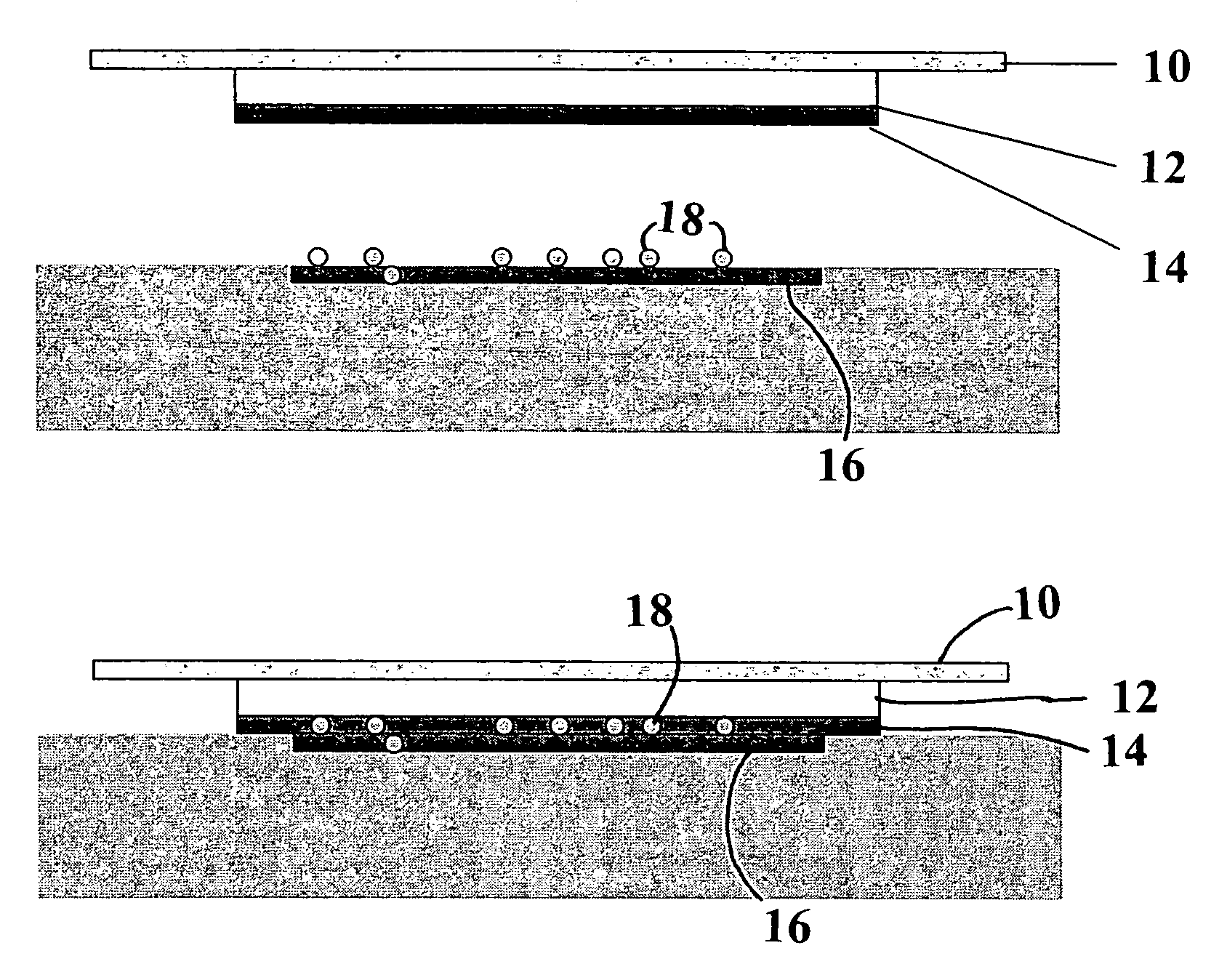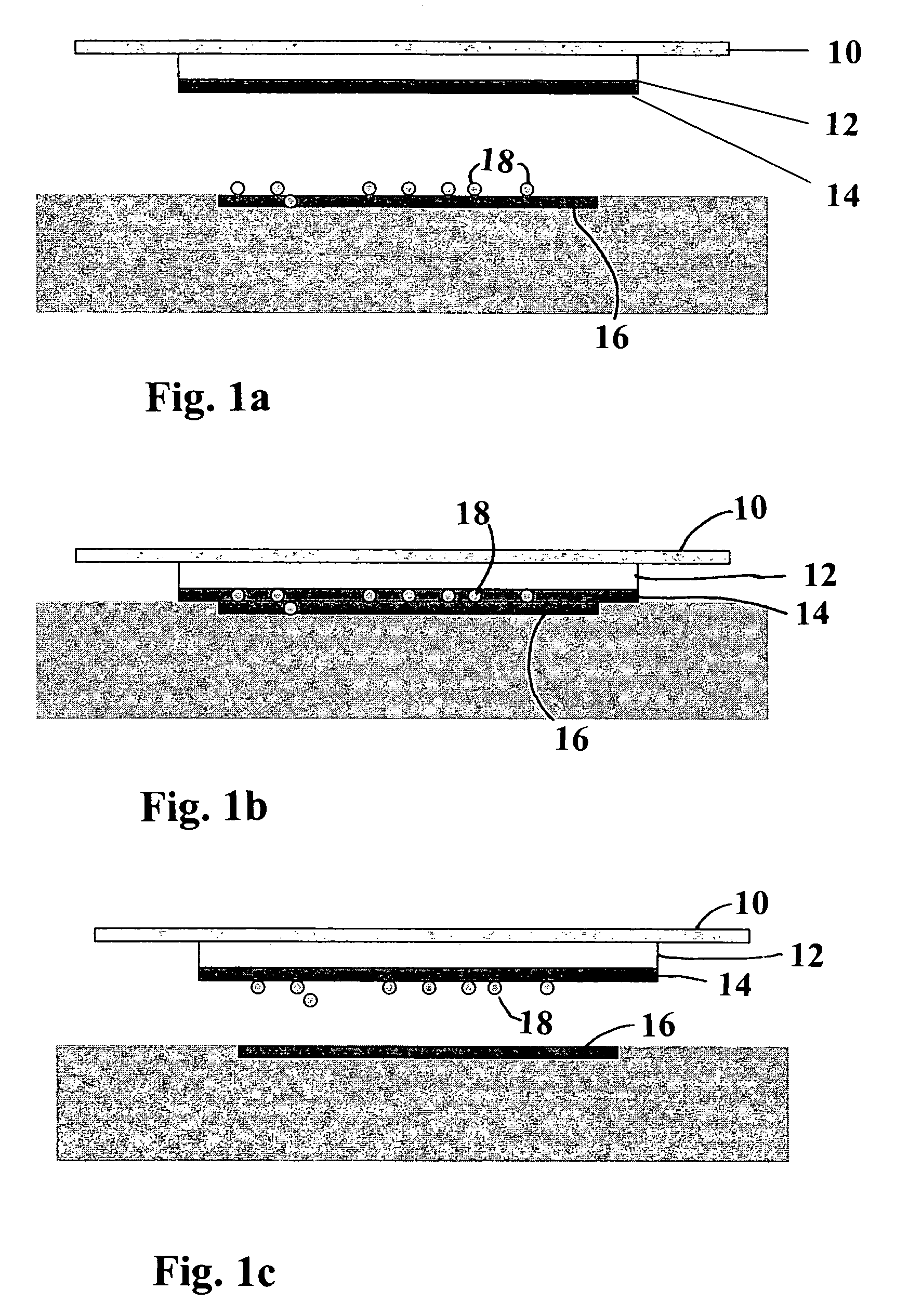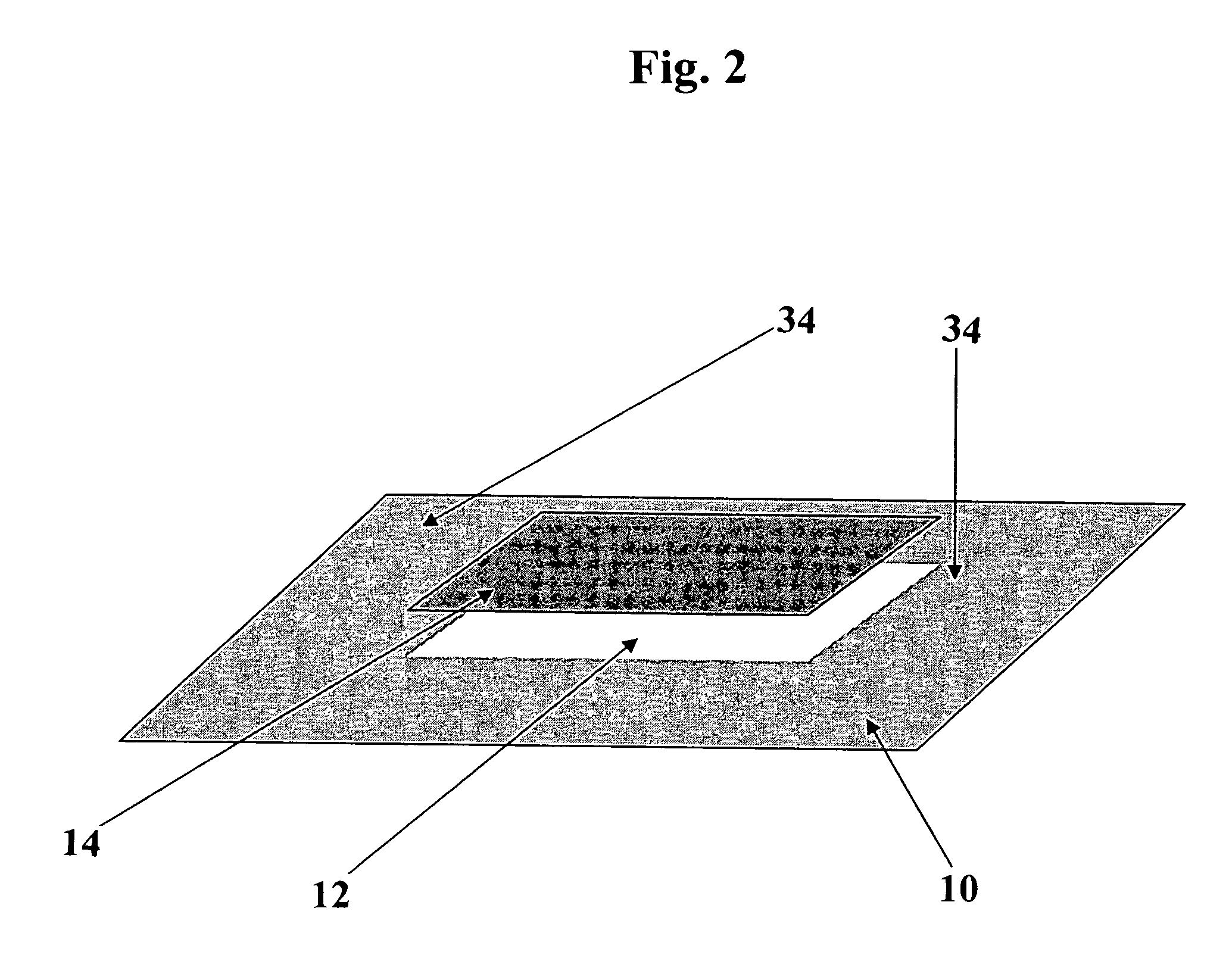Wound dressing with a bacterial adsorbing composition
a technology of adsorption composition and wound dressing, applied in the field of wound dressing products, can solve the problems of high tissue count of microorganisms, delay wound healing, increase entropy, etc., and achieve the effect of reducing the number of pathogenic microorganisms
- Summary
- Abstract
- Description
- Claims
- Application Information
AI Technical Summary
Benefits of technology
Problems solved by technology
Method used
Image
Examples
example 1
Manufacture of Wound Dressing Product
[0059]In this example we manufacture a standard wound dressing based on the invention in the following manner:
Materials: (from inside-out see FIG. 4)
[0060]
COMMERCIALLAYERPRODUCT NAMEMANUFACTURER1.HydrophobicGreen CelluloseABIGO Medical ABlayerAcetate wovenSwedenprepared accordingto U.S. Pat. No.4,617,3262.AdhesiveNational 505ENational Starch &Chemical Ltd.,United Kingdom3.Absorbent(Airlaid) ConcertConcert GmbH,materialMH080.104.P000Falkenhagen, Germany4.AdhesiveNational 505ENational Starch &Chemical Ltd.,United Kingdom5.CarrierPolyurethanefilm,3M, St Paul, MN, U.S.A.layer3M, 9482 no. ID70-0000-6538-66.Adhesive:DURO-TAK 380-295National Starch &Chemical Ltd.,United Kingdom7.SiliconizedLoparexLoparex OYrelease paper,ESP35TEELohja, Finland
A. The hydrophobic layer is preferably produced according to U.S. Pat. No. 4,617,326 by applying to a cellulose acetate fabric an amount of dioctadecyl carbamoyl chloride as disclosed in this patent making a covalen...
example 2
Use of the New Dressing Product to Bind Pathogens
Material: Wound dressing as described in Example 1
[0066]Bacterial strains: Staphylococcus aureus Newman, Pseudomonas aeruginosa 510, Enterococcus faecalis, Candida albicans
[0067]Isolates were cultured on agar with 5% horse erythrocytes in 5% CO2 atmosphere at 37° C. Suspensions were made in phosphate-buffered saline (PBS, 0.02 M sodium phosphate and 0.15 M sodium chloride, pH 7.2) at 109 bacterial cells / ml, 107 fungal cells / ml or indicated concentration.
[0068]The dressing was cut in 1 cm2 pieces. Incubation was made in 24 well polymer plates. 1 ml of suspension was added to each dressing. The plates were placed on a rotary shaker at very low speed. Incubation was performed at room temperature for the indicated time. After incubation, dressings were rinsed in PBS several times, and then put in 2.5% TCA (tricarboxylic acid).
[0069]The ATP content was measured in a luminometer (LKB Wallac). Controls: Number of adhered bacteria (CFU / ATP) ...
example 3
Manufacture of a Vein Catheter Dressing
[0074]In this example, a vein catheter dressing based on the invention was manufactured. The manufacture is made according to Example 1 for the first steps and then with a revised Step C as follows:
C. Cutting and Adding of Carrier Layer.
[0075]The now bonded hydrophobic layer and absorbing layer is cut into suitable pieces for a vein catheter product, in this case 20 mm×20 mm. The cut pieces are placed on carrier-film, prepared with the adhesive and two release papers 20 with folded gripping tabs 28 (see FIG. 3), and in strips of 100 mm. The bonded pieces are centered on the carrier strips and with a distance from center to center of 100 mm. A release paper of the same width is then applied on inner side. The now completely assembled dressing, is cut into pieces of 100 mm× 60 mm, cutting 20 mm from the pad of attached layers in the top end and cutting a slit for the catheter from the opposite side to a distance close to the pad preferably 5 mm b...
PUM
 Login to View More
Login to View More Abstract
Description
Claims
Application Information
 Login to View More
Login to View More - R&D
- Intellectual Property
- Life Sciences
- Materials
- Tech Scout
- Unparalleled Data Quality
- Higher Quality Content
- 60% Fewer Hallucinations
Browse by: Latest US Patents, China's latest patents, Technical Efficacy Thesaurus, Application Domain, Technology Topic, Popular Technical Reports.
© 2025 PatSnap. All rights reserved.Legal|Privacy policy|Modern Slavery Act Transparency Statement|Sitemap|About US| Contact US: help@patsnap.com



